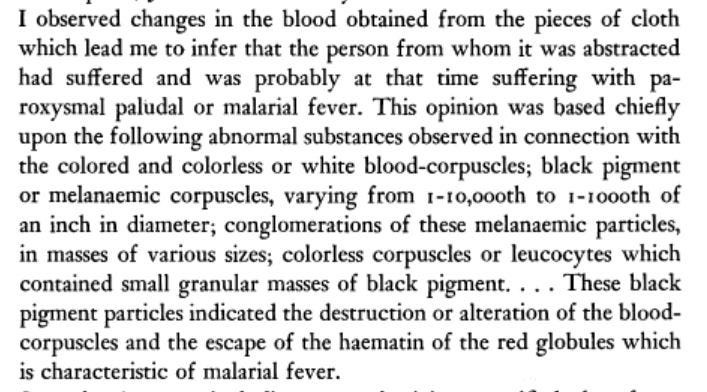Did you know that cigarettes are radioactive?
The Mozart Effect. A murder mystery solved. A remote-controlled brain.
You already know cigarettes are bad for you. But did you know they are radioactive?
Cigarettes contain radioactive polonium. Researchers have estimated that the radiation exposure from a pack of cigarettes is equal to that from one chest X-Ray, give or take. The difficulty in determining the precise amount of radiation is because the amount is trace and it depends on how much of the smoke is breathed in.
Where does the radioactive element in cigarettes come from? The answer is from fertilizer made from apatite rock, which contains uranium. Uranium decays to radioactive polonium-210. Polonium enters the tobacco plant through both the leaves and roots. In developed countries more apatite is used than in other parts of the world.
As a cigarette burns, it reaches temperatures of up to 800°C. This is hotter than the melting point of polonium. The liquefied polonium gloms on to particles in cigarette smoke. As you inhale smoke, the polonium lands in your airways and lungs where it sticks.
The tobacco industry has known for decades that their products contain radioactive substances. They've downplayed it. They tried to make cigarettes with lower amounts, but they didn't have flavor. This review covered the radioactive substances in cigarettes and internal documents of the tobacco industry.
Tobacco is a unique agricultural crop in that its flavor depends on nitrogen reduction, which occurs through the repeated application of high-phosphate fertilizers. The higher the phosphate level of the fertilizer, the higher the concentration of polonium-210 in the tobacco plant.
https://www.downtoearth.org.in/interviews/health/-tobacco-not-only-injurious-to-health-but-also-a-major-source-of-radiation-exposure--62555
Prof. Alok Srivastava of Panjab University-Chandigarh has determined polonium amounts for Indian cigarettes. His interview with Down to Earth is a very interesting read.
It is difficult to pinpoint the exact cause of lung cancer deaths as smokers are inhaling hundreds of different types of carcinogenic material, where Polonium is just one of them. However, it is a rather potent one as it is said that the mass-to-mass Polonium-210 radioisotope is 250 thousand times more toxic than hydrogen cyanide.
Can music improve thinking and treat brain disorders?
Music elicits memories. It can transport us to times and places in the past, make us dream of the future.
Scientists are baffled by the "Mozart Effect". Listening to this piece causes a decline in abnormal electrical activity in brains of those with untreatable epilepsy. It improved spatial thinking. There's no satisfactory explanation yet. This is the subject of my column in Hindustan Times this week.
Scientists are studying this effect. They have tested Haydn, Wagner, Nickelback, Beethoven, Judas Priest. Nothing else apart from Mozart seems to work. t
This year, two research groups put electrodes of EEGs directly in the brains of those with untreatable epilepsy. Listening to this music reduced seizures and inter-seizure electrical abnormalities. It is the acoustic property of the music, not the emotional salience.
Thirty seconds of this track are enough to get an antiepileptic effect. Another group that ran a randomized trial suggested listening to the piece every day. Studies are now using computers to try to tease out the pitch, frequency, melody, harmony to create "music medicine".
This entire study blew my mind not just because it is a medical mystery, or because it is an example of how little we know about how the brain works, but because there are practical applications.
We are not far off from a day when music will be used as therapy to improve concentration, memory, and to treat mental and neurological illnesses.
Music is the least invasive way to alter brain activity, but it’s not the only one. “Brain pacemakers” (deep brain stimulation) with electrodes in the brain are approved for use in Parkinson’s, dystonia, and severe OCD. May be used for bipolar and depression in the future too.
Malaria and murder.
Here’s a forensic true story for you. :)
On the morning of December 28, 1876, a shopkeeper named Narcisse Arrieux was found dead in his shop in Donaldsville, Louisiana. There was blood everyone, and the cause of death was ascertained to be blunt force trauma.
On further inquiry, the police learned that four men had entered Arrieux's shop the previous evening and had asked for liquor. When Arrieux went to to draw the liquor from a barrel, he was struck with iron weights by one or more of the assailants.
The police captured four suspects. One of them, Wilson Childers was found with clothing with red spots on them. Childers claimed the spots were paint stains. The clothing was taken to Dr. Joseph Jones who was professor of chemistry at the University of Louisiana at the time.
Dr. Jones not only identified the spots from chemical analysis as being human blood, he made an additional discovery- quite remarkable at the time.
Asked to testify at court in May 1878, this is what Dr. Jones said—
Dr. Jones had determined to a degree of confidence that the spots on the defendant's clothing were blood from someone who had been suffering from malaria. Note that we are talking about a time when blood groups were not known. How malaria was spread was unknown as well.
Several witnesses (including two doctors) testified that Narcisse Arrieux had indeed been suffering from malaria for a few weeks prior to his demise. Combined with the testimony of an eyewitness who saw the men that day, the evidence was enough to convict all four.
Mind-blowing fact of the week:
Each person has an odor fingerprint that is a combination of over 1000 volatile organic compounds that are continuously released.
(Source: Induced volatolomics of pathologies)
Must-listen podcast episodes:
If you liked my column on the Mozart Effect, you will love this podcast episode that highlights just how little we know about the human mind.
It is an instant classic about the effects of Deep Brain Stimulation:





